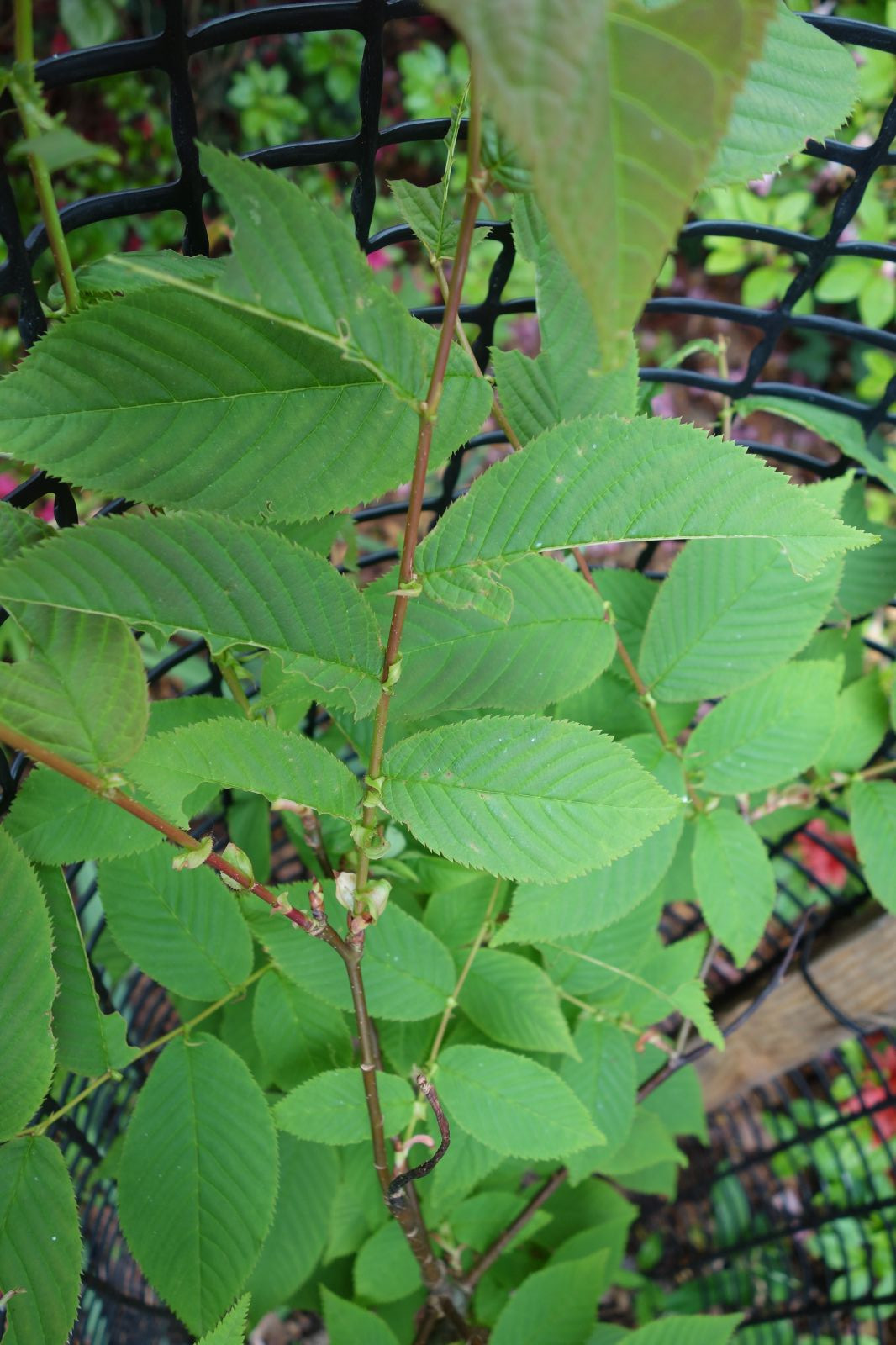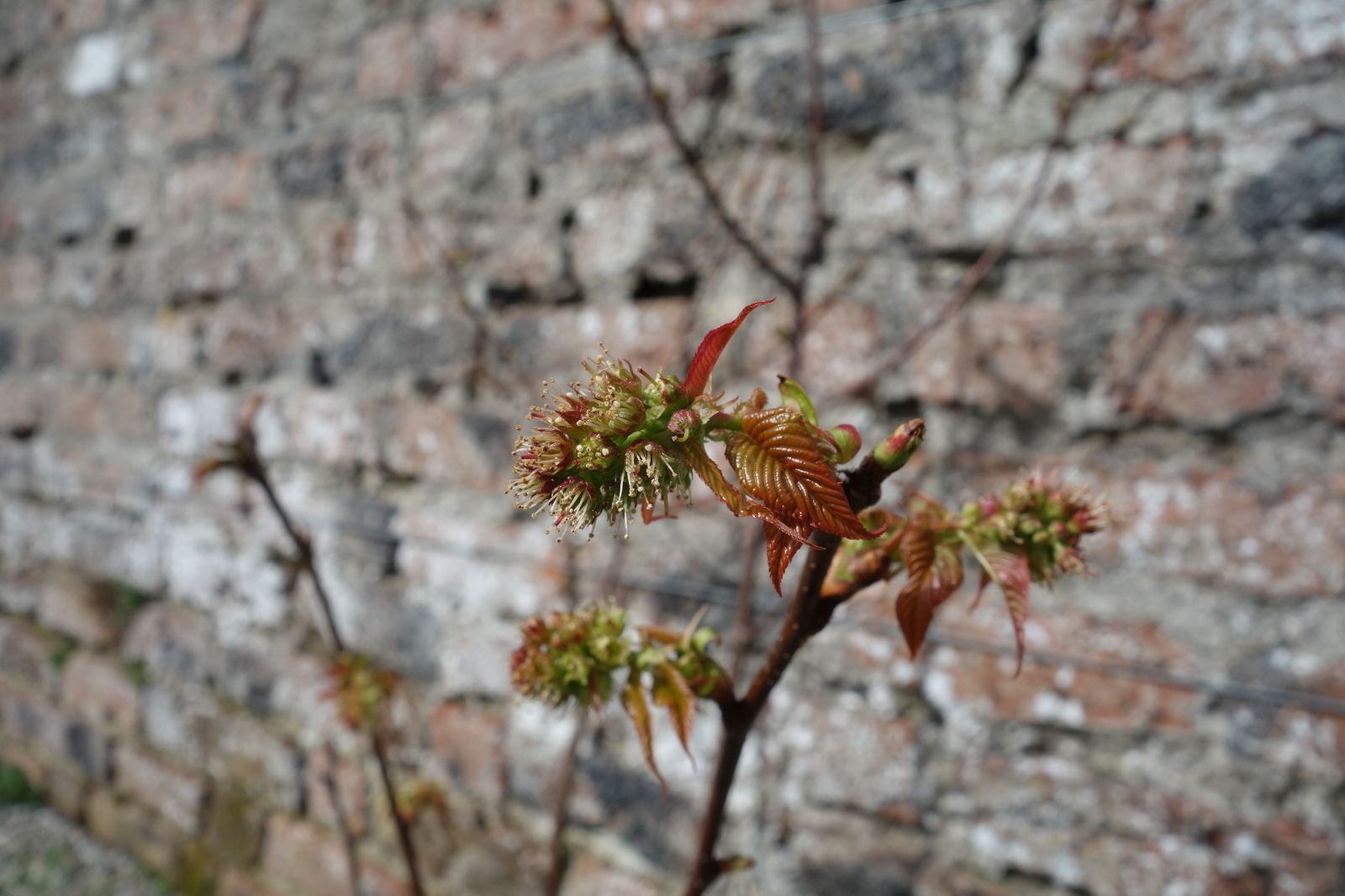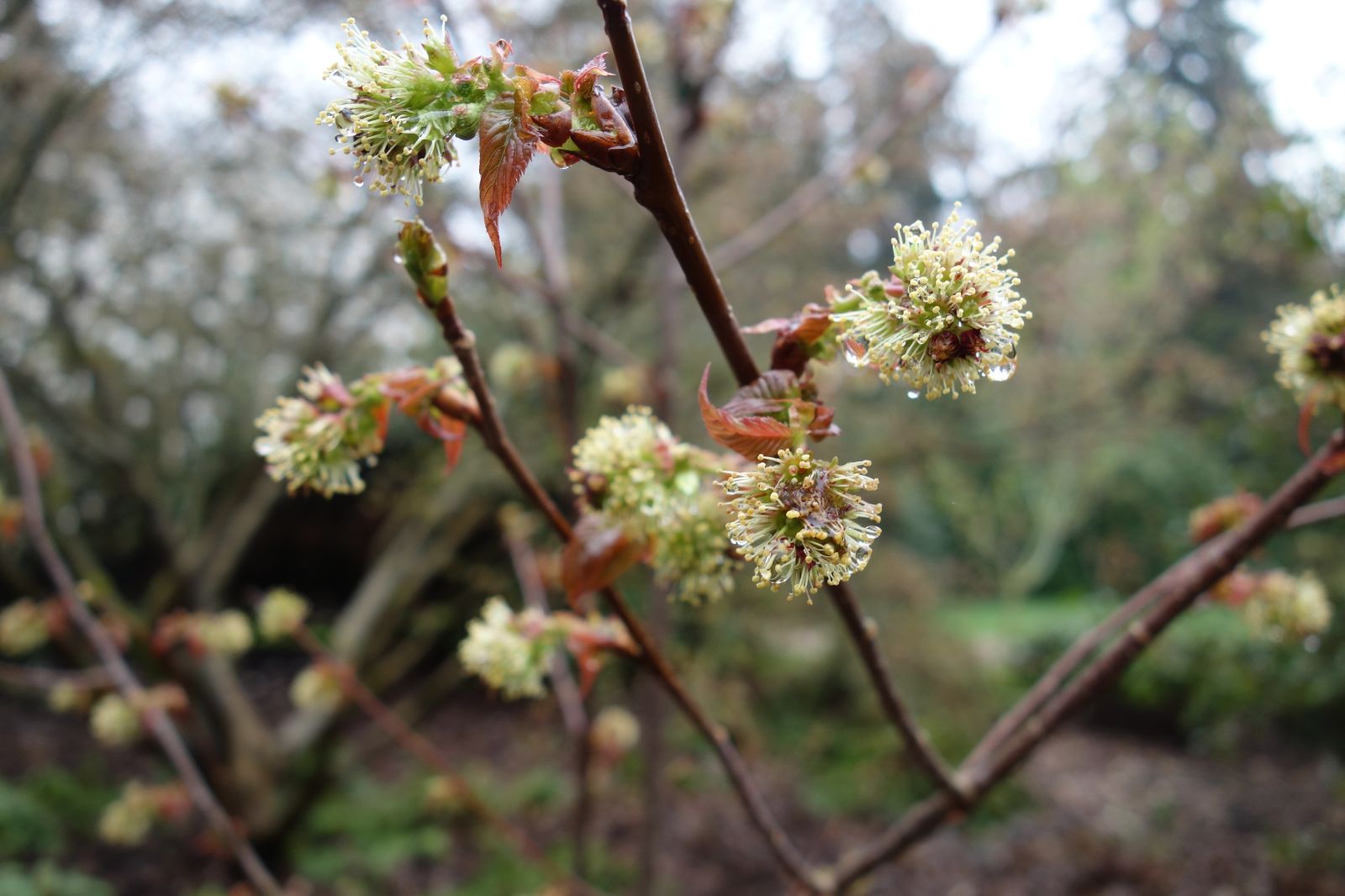Maddenia hypoleuca
Credits
Article from Bean's Trees and Shrubs Hardy in the British Isles
Recommended citation
'Maddenia hypoleuca' from the website Trees and Shrubs Online (treesandshrubsonline.
Genus
A large shrub or small tree in the wild. Leaves finely double-serrate, oblong or oblong-ovate, acuminate, up to 21⁄2 in. long and 5⁄8 in. wide on fertile branchlets, much longer on extension growths, almost sessile, glabrous, very white beneath. Flowers greenish, borne with the unfolding leaves, in short downy racemes on leafy peduncles. According to the original description, they are perfect, with only a single carpel, but there is considerable disagreement concerning the distribution of the sexes in this genus (and on whether or not flowers with two carpels produce fertile twin-fruits).
This species was discovered by Wilson in western Hupeh in 1907–8 during his first expedition for the Arnold Arboretum. It is rare in British gardens and would probably not have survived but for its being preserved and propagated by Messrs Hillier. It is in truth of little garden value, the most interesting feature being the white undersurface of the leaves.



